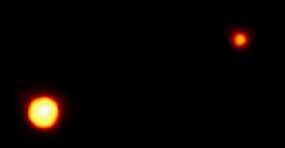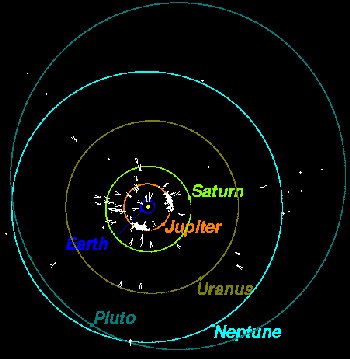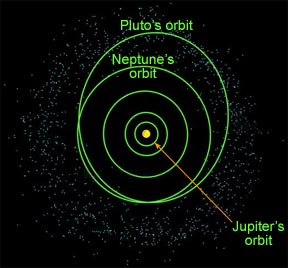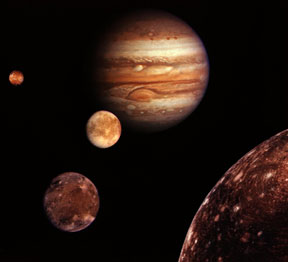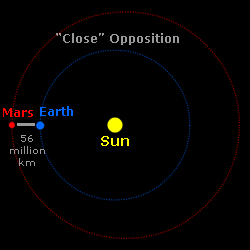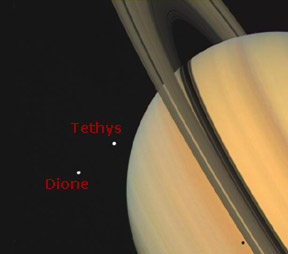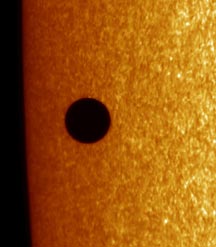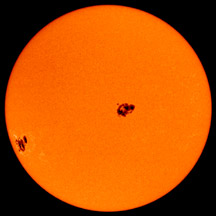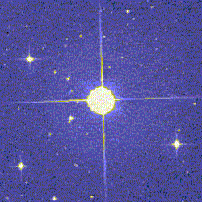Click on image for full size
Image courtesy Dr. R. Albrecht (ESA/ESO Space Telescope European Coordinating Facility) and NASA.
Searching for more moons of Pluto
News story originally written on February 28, 2003
Astronomers are beginning to organize a search for more moons of Pluto. Pluto has only one known moon, Charon, but astronomers think there might be other moons orbiting Pluto that haven't yet been discovered. Because Pluto is so far away (it is usually the furthest planet from the Sun) it is very difficult to see moons at that distance, even with the world's most powerful telescopes. Astronomers think earlier searches for other moons of Pluto could have missed moons as large as hundreds of kilometers across.
Scientists are preparing to launch a spacecraft, called the New Horizons mission, towards Pluto in a few years. Pluto is the only planet that has never been visited by a spacecraft, so we will learn a lot about Pluto when New Horizons gets there. The New Horizons mission is scheduled for launch in January 2006, but won't reach Pluto until sometime around 2015. Scientists working on New Horizons plan to search for more moons of Pluto using ground-based telescopes and possibly the Hubble Space Telescope. They expect to complete the search by the end of this year, and think they will be able to find moons as small as 10 to 20 kilometers across. If the scientists find more moons orbiting Pluto, they may want the New Horizons spacecraft to explore them.
Why do scientists think there might be more moons around Pluto? There have been many new discoveries of moons around planets in the outer solar system in recent years: 3 new moons of Neptune were found earlier this year, a new moon of Jupiter was found in 2002, 11 new moons of Jupiter were found in 2001, 11 new moons of Jupiter and 12 new moons of Saturn were found in 2000, and 4 new moons of Uranus were found in 1999. Also, astronomers have discovered several "moons" orbiting Kuiper Belt Objects (KBOs) in recent years. KBOs, which are also called Trans Neptunian Objects (TNOs), are large, icy spheres that orbit the Sun in the same general area as Pluto. Some types of comets originate in the Kuiper Belt. Most astronomers think that Pluto is just an especially large KBO, and since other KBOs have "moons", maybe Pluto has more than one moon. Some astronomers think Pluto is, in fact, "just" another KBO, and shouldn't really be considered a planet at all!


